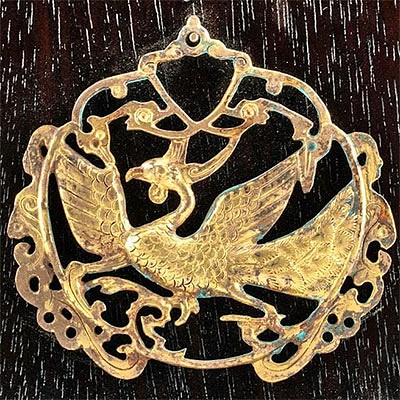Rare Phoenician Glass Eye Ring
Lot 19
About Seller
Artemis Fine Arts
686 S Taylor Ave, Ste 106
Louisville, CO 80027
United States
Selling antiquities, ancient and ethnographic art online since 1993, Artemis Gallery specializes in Classical Antiquities (Egyptian, Greek, Roman, Near Eastern), Asian, Pre-Columbian, African / Tribal / Oceanographic art. Our extensive inventory includes pottery, stone, metal, wood, glass and textil...Read more
Estimate:
$1,800 - $2,500
Absentee vs Live bid
Two ways to bid:
- Leave a max absentee bid and the platform will bid on your behalf up to your maximum bid during the live auction.
- Bid live during the auction and your bids will be submitted real-time to the auctioneer.
Bid Increments
| Price | Bid Increment |
|---|---|
| $0 | $25 |
| $300 | $50 |
| $1,000 | $100 |
| $2,000 | $250 |
| $5,000 | $500 |
| $10,000 | $1,000 |
| $20,000 | $2,500 |
| $50,000 | $5,000 |
| $100,000 | $10,000 |
| $200,000 | $20,000 |
About Auction
By Artemis Fine Arts
Jun 17, 2021
Set Reminder
2021-06-17 10:00:00
2021-06-17 10:00:00
America/New_York
Bidsquare
Bidsquare : Ancient & Ethnographic Art Through The Ages
https://www.bidsquare.com/auctions/artemis-gallery/ancient-ethnographic-art-through-the-ages-7094
Ancient art from Egypt, Greece, Italy and the Near East, as well as Asian, Fossils, Pre-Columbian, Native American, African / Tribal / Oceanic, Fine art, and much more! All categories, all price ranges... all legally acquired and guaranteed to be as described or your money back. Artemis Fine Arts info@artemisgallery.com
Ancient art from Egypt, Greece, Italy and the Near East, as well as Asian, Fossils, Pre-Columbian, Native American, African / Tribal / Oceanic, Fine art, and much more! All categories, all price ranges... all legally acquired and guaranteed to be as described or your money back. Artemis Fine Arts info@artemisgallery.com
- Lot Description
Classical World, Eastern Mediterranean, Phoenician, ca. 5th century BCE. A beautiful ring made from a band of semi-translucent, aubergine-hued glass. On the face are two opaque discs of yellow and blue glass fused atop and to the band. The two sheets of glass on the face form the distinctive "evil eye" design to ward off ill spirits. The interior is smooth and slightly flattened, perhaps from the original wearer. The band's thickness is not perfectly uniform, but adds character to this unique piece of ancient jewelry. Size of band: 0.93" Diameter (2.4 cm); opening size: 0.60" Diameter (1.5 cm); US ring size: 3.5
Imagery of the Evil Eye was first recorded by the Mesopotamian approximately 5,000 years ago in cuneiform on clay tablets. Some scholars believe that it may actually have originated as early as the Upper Paleolithic Age. Evil Eye iconography has been found in Jewish, Christian, and Muslim cultures as well as Buddhist and Hindu societies; however, each culture ascribes a similar meaning to it. The evil eye is believed to be a curse cast by a malevolent glare that is typically directed at a person who is unsuspecting and unaware. Many cultures believe that the evil eye can bring about misfortune, injury, or bad luck. For this reason, talismans and beads like these traditionally have been created to protect the wearer against the evil eye given their powerful apotropaic properties against the evil eye.
Provenance: private New York, USA collection; ex-Robert Horbacz estate, New York, USA, acquired from Amphora Auction 96, lot 499
All items legal to buy/sell under U.S. Statute covering cultural patrimony Code 2600, CHAPTER 14, and are guaranteed to be as described or your money back.
A Certificate of Authenticity will accompany all winning bids.
We ship worldwide and handle all shipping in-house for your convenience.
#165003Stable fissure across face and underside of band. Age expected wear and light mineral deposits in that recessed areas. Otherwise intact and wearable.Condition
- Shipping Info
-
All shipping is handled in-house for your convenience. Your invoice from Artemis Gallery will include shipping calculation instructions. If in doubt, please inquire BEFORE bidding for estimated shipping costs for individual items.
-
- Buyer's Premium



 EUR
EUR CAD
CAD AUD
AUD GBP
GBP MXN
MXN HKD
HKD CNY
CNY MYR
MYR SEK
SEK SGD
SGD CHF
CHF THB
THB













